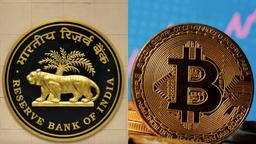Over the past few years, India's payment landscape has undergone a significant transformation. Thanks to rapid technological advancements and progressive governmental policies, digital transactions have become the norm. Platforms such as UPI, BHIM, and numerous e-wallets are leading this shift, reducing the dependence on traditional banking systems.
- Blogs
- Finance & Banking
- Demystifying The Digital Payment Ecosystem In India 2 6523e9c914e5bf0001288a41
Demystifying the Digital Payment Ecosystem in India
Finance & Banking • 9 Oct, 2023 • 22,504 Views • ⭐ 3.0
Written by Anand Swami

The Dawn of UPI

In 2016, the National Payments Corporation of India launched the Unified Payments Interface (UPI) as a real-time payment system. UPI enables mobile platforms to facilitate immediate money transfers between banks, making it a crucial element of India's digital payments revolution.
Its smooth, constant operation and user-friendly interface have contributed to its success. UPI's interoperability is its primary advantage, allowing users from any bank to conduct transactions quickly and easily. With a unique identification system similar to an email, transactions are as simple as sending a message.
FINANCE & BANKING QUIZ • 10 QUESTIONS • 2 MINS
We've got a Finance & Banking quiz for you!
TAP TO PLAY

BHIM: The Flagbearer

Building on the UPI infrastructure, BHIM (Bharat Interface for Money) was introduced by the Indian government. Designed to be a one-stop solution for all UPI-based transactions, BHIM stands as a testament to the government's commitment to fostering a cashless economy.
Its widespread acceptance signifies the harmonious blend of technological innovation and strategic policymaking. BHIM further enhanced the digital transaction experience by integrating multiple banks and offering a range of transaction types. Its user-friendly interface and government backing gave it instant credibility and popularity.
E-wallets: Beyond Banking

E-wallets, like Paytm, MobiKwik, and FreeCharge, have emerged as popular alternatives to traditional banking. Their value proposition lies in offering users a way to store and spend money digitally without the need for a bank account, thereby democratizing access to financial services and catering to the unbanked population.
Moreover, these e-wallets expanded their horizons by providing services like bill payments, mobile recharges, and even movie ticket bookings. This multi-functionality turned them into essential lifestyle apps for many Indians.
Traditional Banking's Digital Evolution

Banks haven't been mere spectators. Recognizing the potential of digitalization, many have revamped their systems to offer online banking, mobile apps, and UPI-based services. By integrating with the digital ecosystem, they've ensured their continued relevance in this ever-evolving financial landscape.
The transition wasn't just digital but also cultural, with banks promoting digital literacy among their customer base. The advent of 'neo-banks' or purely digital banks further testifies to this shift.
The Regulatory Backdrop

Government policies and regulations have been instrumental in shaping India's digital journey. Measures like the demonetization of high-value currency notes in 2016 gave a significant impetus to digital payment adoption. Furthermore, regulatory bodies have ensured a secure and trustworthy environment for these transactions to flourish.
The RBI's consistent efforts in establishing guidelines and nurturing innovations have been pivotal. With an emphasis on security and consumer protection, they've instilled confidence in users to embrace the digital wave.
Challenges and Considerations

Despite the growth, challenges like cybersecurity threats, digital literacy, and infrastructural constraints persist. These challenges underscore the need for continued innovation, consumer education, and robust cybersecurity measures to ensure the sustained growth of the digital payment ecosystem.
While urban areas surged ahead, ensuring consistent digital infrastructure in rural regions remains a task. Bridging this digital divide is essential to ensure inclusivity in the digital financial revolution.
Socio-Economic Impact

The proliferation of digital payments has had far-reaching socio-economic implications. Reduced dependency on cash has enhanced transparency, curbed corruption, and bolstered financial inclusion. Small businesses and rural consumers, traditionally marginalized from the formal banking system, have gained increased access to financial services.
This transformation has also fostered entrepreneurship, with many leveraging digital platforms to scale and reach wider audiences. The ripple effects of this digital boom are visible across sectors, signalling a brighter economic future.
Conclusion
The digital payment ecosystem in India represents a fascinating confluence of technological innovation, proactive government policies, and adaptive consumer behaviour.
As UPI, BHIM, and e-wallets continue to shape the nation's financial trajectory, they underscore India's position as a global leader in digital finance. The journey, while impressive, remains ongoing, with challenges and opportunities intertwined.
Rate this article
Other articles you may like
The Great Indian Banking Reforms: An Analysis of the Insolvency and Bankruptcy Code (IBC)
Finance & Banking • 10 Oct, 2023 • 21,965 Views

Financial Inclusion in Rural India: The Role of Microfinance and Small Finance Banks
Finance & Banking • 10 Oct, 2023 • 24,085 Views

The Evolution of Central Banks: From Gold Reserves to Cryptocurrency
Finance & Banking • 9 Oct, 2023 • 22,707 Views





